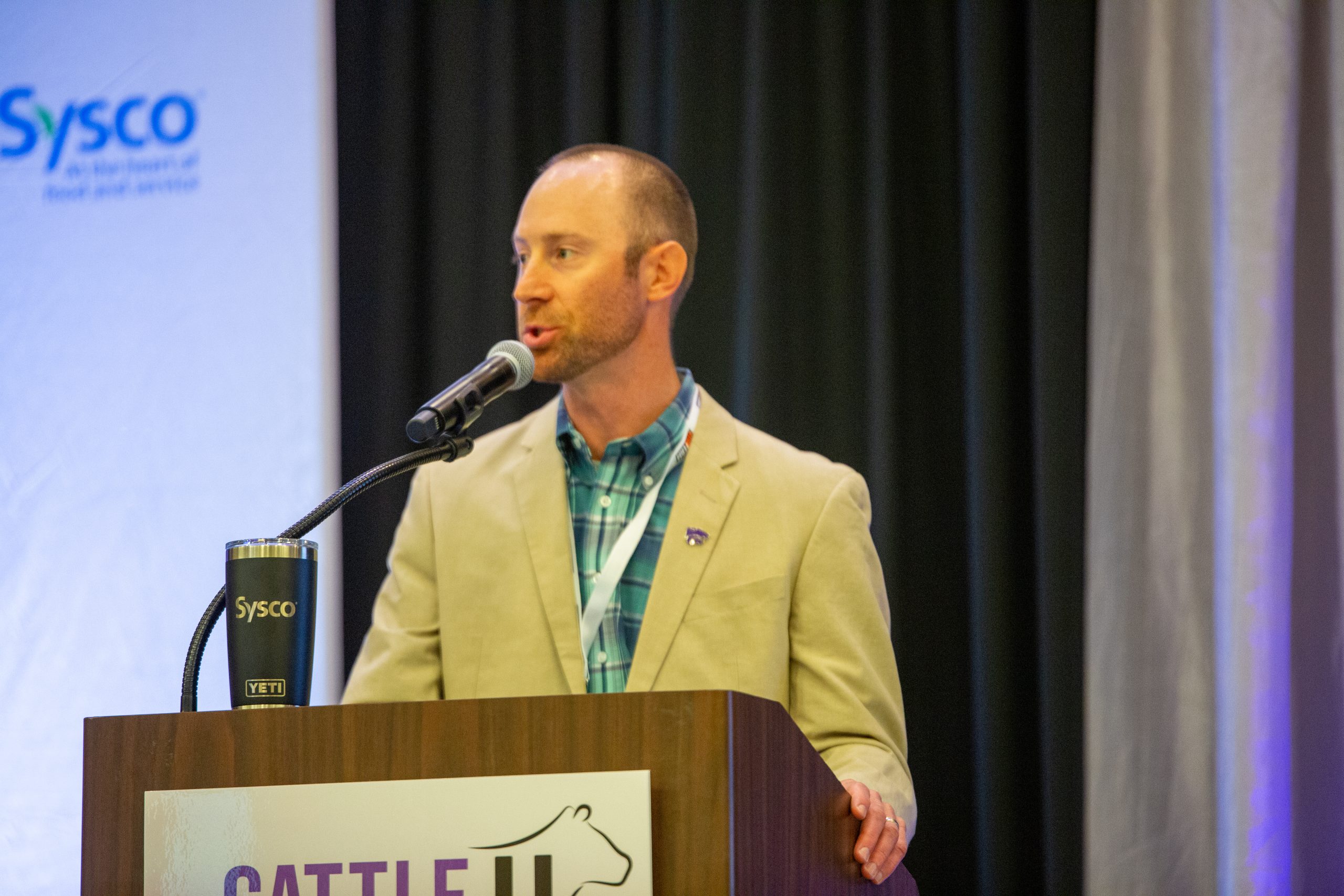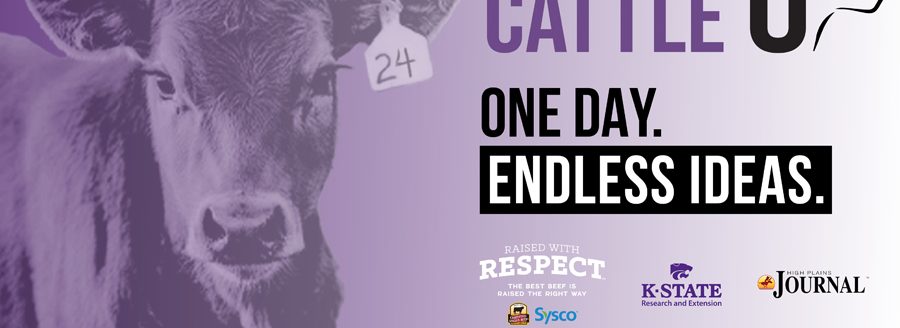Back to basics when it comes to managing cow herds

It’s easy to get caught up in all the new techniques and tools when it comes to managing a cow herd, but it’s worth taking a look at the most basic part of the cow herd—the cow—and what she needs to be to be successful and productive.
Jason Warner, Kansas State University assistant professor and Extension cow-calf specialist, told attendees at Cattle U this summer in Manhattan, Kansas, that the most important consideration when managing cows is to be aware of the cow’s body condition score. If too fat, the cow has trouble getting bred. If too thin, the same thing. It’s a balancing act.
The current situation is fascinating to him—how high price levels are, the inventory numbers and beef production per unit of females in the cowherd.
If ranchers in a small cow herd inventory environment continue to take females out of production, the question becomes how much it will cost to bring them back into the cowherd, he said.
Producers need to be cognizant long-term, or at least for the next several years, of that cost, Warner said. Managing those females strategically to minimize turnover can be valuable to the operation. A producer must think about appreciation cost on those females and how much it’s going to cost to replace heifers.
“I just encourage us, generally speaking, to think about that,” he said. “Maybe from a cost standpoint, we think about input costs, feed costs. Maybe we’re at a better price level now than what we’ve been at for the last several years.”
There has been some moderation in the cattle market, but prices are still highly volatile. Thus, it becomes very important to rely on risk management strategies that will help input costs and other expenditures related to the cow herd. Warner questioned how cow-calf producers are going to work through those challenges.
“We’ve got to get back to the fundamentals,” Warner said. “We’re in a very dynamic situation from just a production standpoint. “Let’s just get back to the fundamentals and think about some basic things with cow herd management that are really, really important.”
First, a producer is set up to be successful, long-term year in and year out. It’s easy to overlook important details, however, and each operation is different.
Warner stresses unit cost of production. As with any business, cow-calf operations are going to have a unit cost of production, and producers need to look at the end goal of their operation. Are the weaned calves going to be sold or kept and fed in the growing/yearling phase? What happens when the cows are not producing and can’t be part of the herd any longer?
The unit of cost production is the cost per pound of each calf sold at weaning time. Warner said that expense can be figured on a per pound basis or on a per hundredweight basis. That can be a function of the total annual production costs or the “full in” cow costs relative to a measure of production on a per calf or on a per calf weaned-on-cow exposed basis.
“In the context of a cow-calf production system, we look at it relative to total annual cow costs for all those females that we run there within that herd relative to the pounds of calf weaned that we’re going to get produced relative to the total numbers of females that we’re going to expose to breeding to get that subsequent calf crop right,” he said.
That’s essentially the breakeven point or the net price a producer is going to be able to get during that period for the revenue to pay the bills on the females who didn’t produce a calf.
Even with an 80 to 90% success rate, expenses have to be considered on all the females. “If we do have a pound of calf weaned per cow exposed, that gets us back on that playing field,” Warner said.
The cost per cow a year varies, but Warner estimates it at around $1,000 per head. Feed costs vary. Depreciation, labor and all the other expenses are all important considerations. Calf prices vary by weight and type, he said.
“Bottom line is we should be able to make pretty good money at these calf prices,” he said, even with costs of $1,000 per cow per year. He added a caveat, however.
Net profit is very important, he said, and the next question is what producers can do to improve that number even when margins are tight.
Most effective tool
Warner said the single most effective tool that can help producers evaluate a cow’s performance is using body condition scores.
“Keep in mind total cow costs,” he said. “Feed is a big driver of that, and on the flip side, we look at the denominator of their pounds weaned per cow exposed for reproduction. That’s a function of reproductive rate.”
The key is how to utilize the BCS system to make strategic cow herd management decisions. This could include the cost of production to manage higher feed costs while trying to improve reproduction and increase overall reproductive rates. Nutrition is highly correlated to reproduction.
“We think about making strategic cow herd management decisions,” Warner said. “They’re important and certainly important regardless of what the overall economic outlook or picture is from where we are from a calf-calf production standpoint. We know that how we make nutritional decisions and cow herd management decisions with regards to nutrition has a big impact on our reproductive rate and reproductive success.”
Warner said producers need to break it down into the most important times in pregnancy and how important nutrition is in those periods and ask themselves is the third trimester important and what about post-calving and going back into the breeding season?
“When you step back and take a look at it, most of the data would generally suggest that the biggest impact that we have on reproductive success in a set of cows is going to be a function of late gestation nutrition,” he said. “So that nutrition we manage in late gestation in that third trimester is really critical.”
Body condition score at the time of calving, not at the time of breeding, has the single greatest impact on subsequent reproductive success, according to Warner.
“We think about setting these cowherds up to be successful, making sure that we manage them appropriately such that we have a high rate of those females actively cycling going in to the breeding season, and at the same time increasing our opportunity to have a high percentage of those females pregnant at the end of the breeding season,” he said. ”Body condition score at the time of calving is going to be our biggest driver on that.”
Body condition scores are an estimate of what the body energy reserves are for the cow. It’s what she’s stored over the course of time, because her maintenance needs are being met on a forage basis.
If the cow is gaining weight and body condition, she will be storing some of that energy for reproduction, he said. “Weight in and of itself is not directly related to nutrition. Body condition is going to be a much more accurate predictor of where those females are from a nutrition standpoint.”
Knowing BCS and its basic fundamental concept is crucial, especially when evaluating those factors that impact both the numerator and denominator of the unit cost of production, Warner said. Producers can make a strategic calorie management decision on nutrition, particularly for a set of females going into the late gestation period, he said.
If the producer can make an accurate determination of where those females are in terms of body condition, they possibly can save on some supplemental feed for maybe 30 or 45 days, Warner said.
Kylene Scott can be reached at 620-227-1804 or [email protected].



